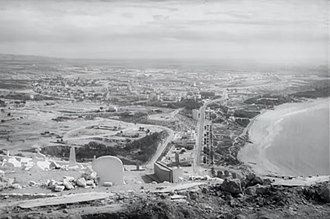The Agadir earthquake struck Morocco on February 29, 1960, leaving a trail of destruction and devastation in its wake. The city of Agadir, located on the country’s southwestern coast, was the epicenter of this catastrophic event. The earthquake, with an estimated magnitude of 5.7 to 6.2, resulted in the deaths of approximately 12,000 to 15,000 people, making it one of the deadliest earthquakes in Moroccan history.
The impact of the earthquake was felt far beyond the immediate loss of lives. Agadir, once a thriving city known for its beautiful architecture and vibrant culture, was almost entirely destroyed within a mere 15 seconds. The force of the earthquake reduced buildings to rubble, leaving behind a landscape of devastation and despair.
The aftermath of the Agadir earthquake brought about significant changes in building codes and emergency response strategies in Morocco. The destruction caused by the earthquake highlighted the need for improved construction standards to ensure the safety of buildings and infrastructure in seismic zones. This led to the implementation of stricter regulations and guidelines for earthquake-resistant construction in Morocco, aimed at minimizing the impact of future earthquakes.
Furthermore, the Agadir earthquake served as a wake-up call to the international community, shedding light on the importance of earthquake preparedness and aid. The disaster prompted a global response, with countries and organizations coming together to provide assistance and support to Morocco. This event raised international awareness about the need for effective disaster management strategies and the importance of providing aid to affected regions.
Historical records and eyewitness accounts provide valuable insights into the scale of the destruction caused by the Agadir earthquake. The city’s infrastructure, including hospitals, schools, and residential buildings, was severely damaged or completely destroyed. The loss of life was immense, with entire neighborhoods reduced to rubble and countless families left homeless.
Efforts to rebuild Agadir commenced immediately after the earthquake, with the Moroccan government leading the way. The reconstruction process aimed to not only restore the physical infrastructure but also to revitalize the spirit and resilience of the city’s residents. The new Agadir that emerged from the ruins incorporated modern urban planning principles and earthquake-resistant construction techniques.
The Agadir earthquake remains a significant event in Moroccan history, serving as a reminder of the power and unpredictability of natural disasters. It stands as a testament to the strength and resilience of the Moroccan people, who came together to rebuild their city and improve their preparedness for future seismic events.
References:
- Wikipedia – 1960 Agadir earthquake
- BBC – Agadir earthquake: How Morocco has rebuilt after disaster
- USGS – The 1960 Agadir, Morocco Earthquake
SEO Excerpt: The Agadir earthquake of 1960 was one of the deadliest earthquakes in Moroccan history, resulting in the deaths of thousands of people and the near-total destruction of the city of Agadir. This devastating event prompted significant changes in building codes and emergency response strategies in Morocco, as well as raising international awareness about earthquake preparedness and aid. Learn more about this historical event and its long-lasting impact.

